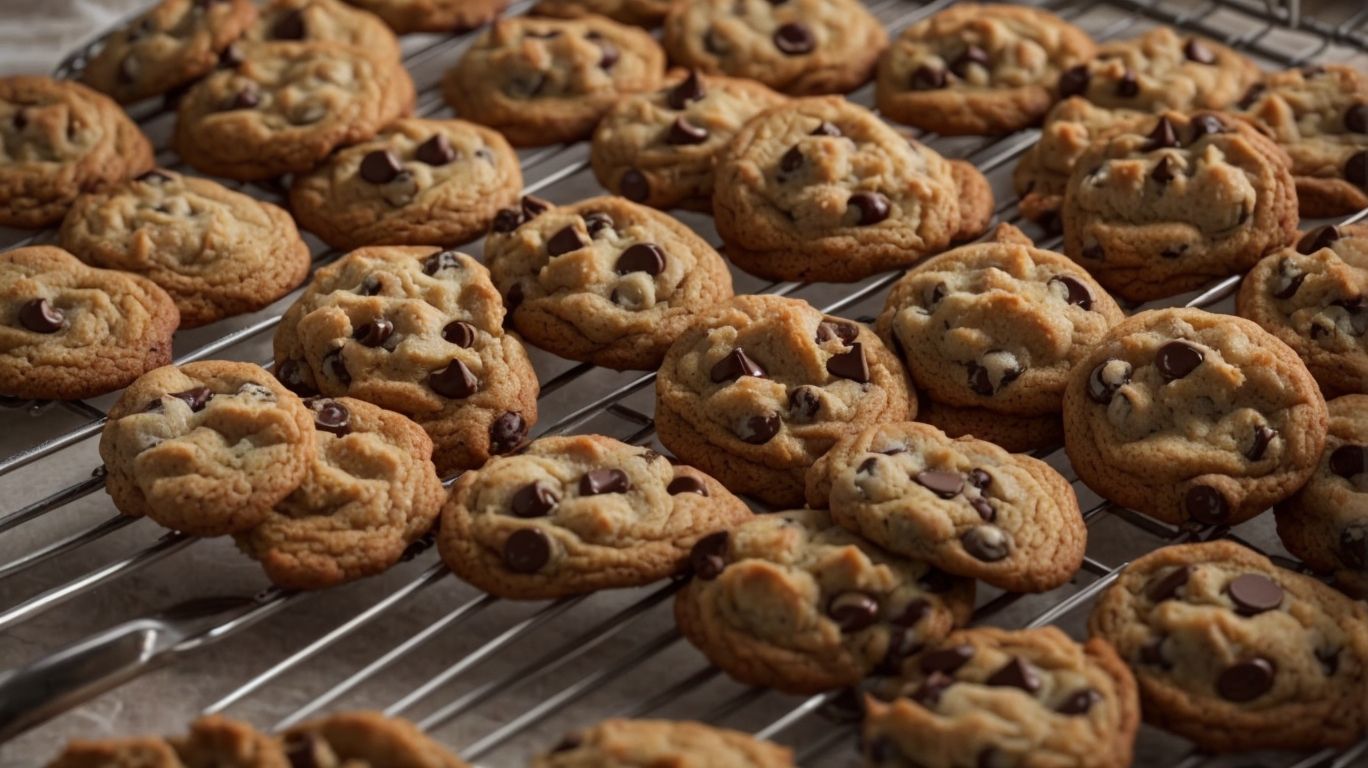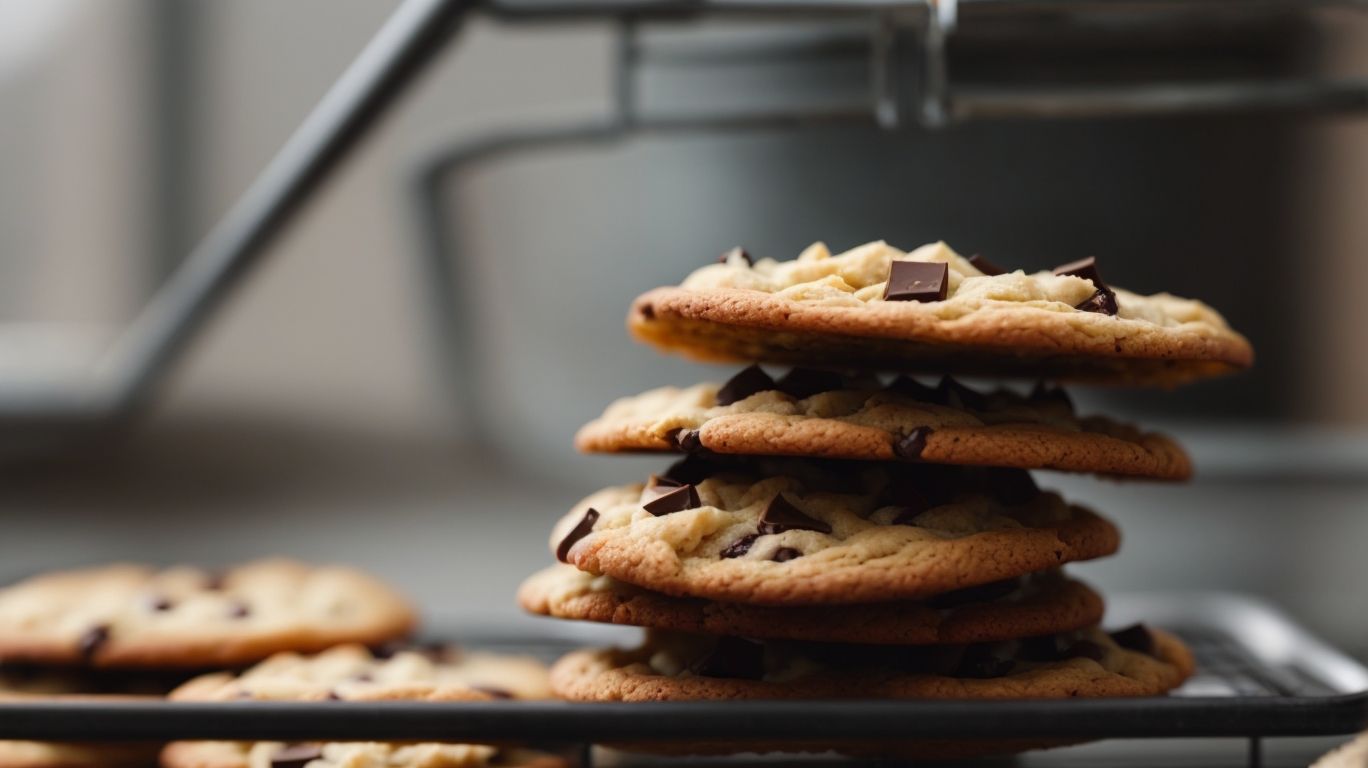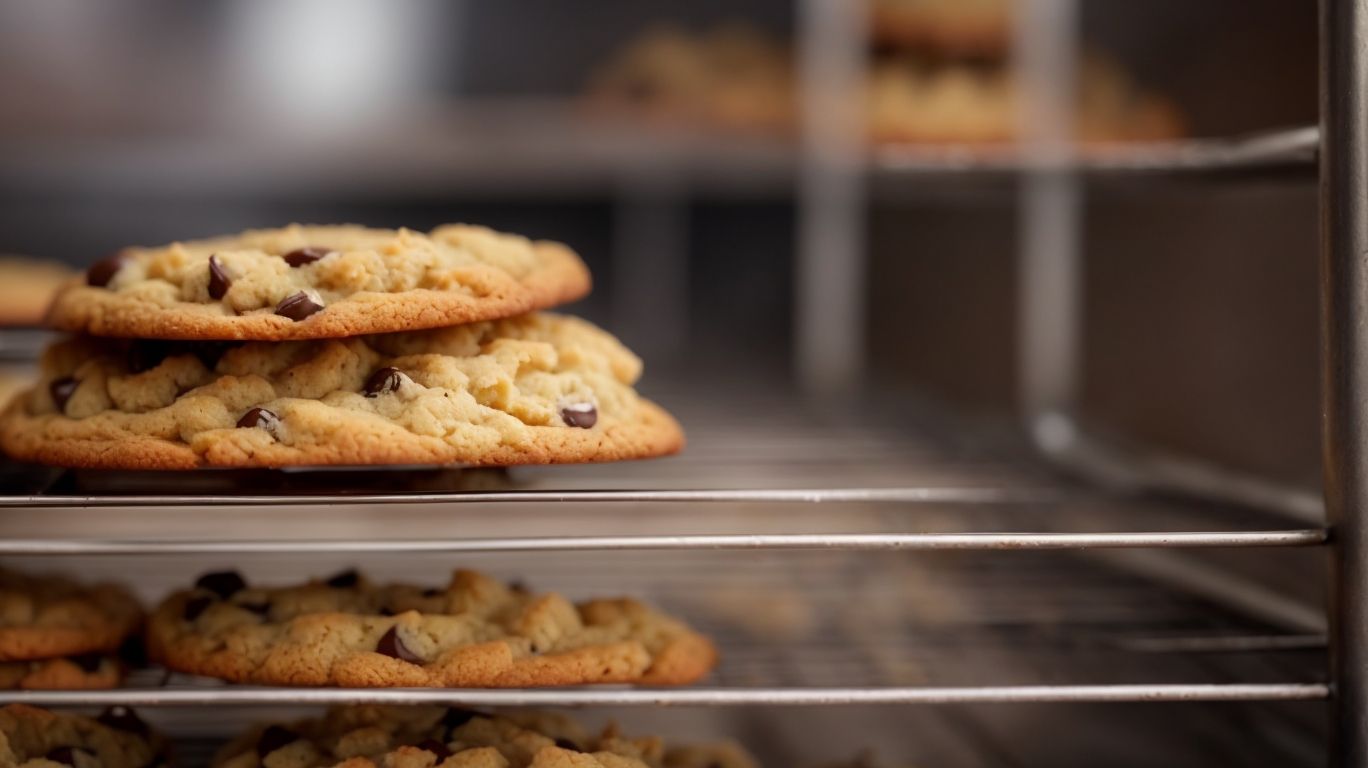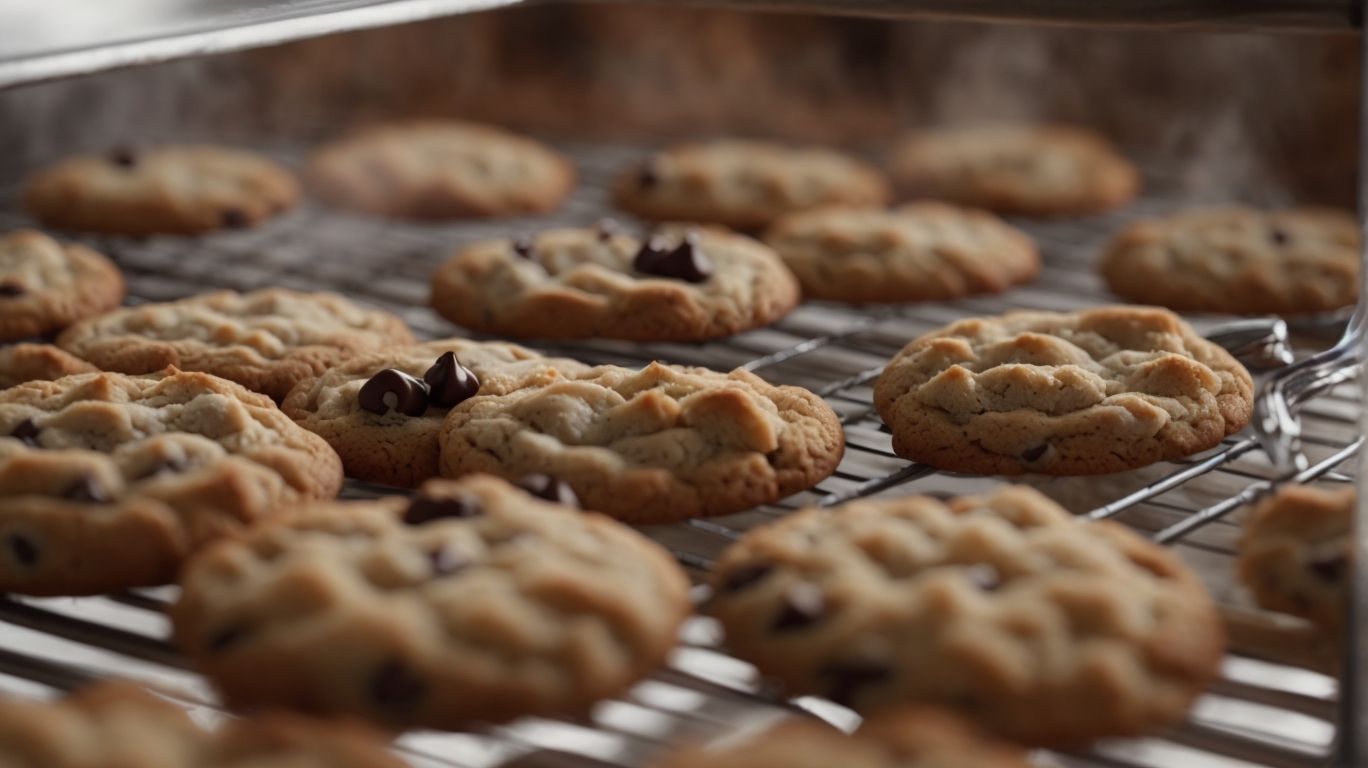How to Bake Cookies Without Vanilla Extract?
Have you ever wondered what makes vanilla extract such a popular ingredient in baking cookies? Vanilla extract adds a depth of flavor and aroma that enhances the overall taste of your cookies.
But what if you find yourself in a situation where you need to bake without vanilla extract? Whether it’s due to an allergy, running out of vanilla extract, or simply wanting to try a different flavor profile, there are plenty of alternatives to consider.
In this article, we will explore why vanilla extract is used in baking cookies, reasons someone might want to bake without it, substitutes for vanilla extract, recipe adjustments, and tips for baking delicious cookies without vanilla extract.
Let’s dive in and learn how to create tasty vanilla-free cookies that will still satisfy your sweet tooth!
Key Takeaways:
What is Vanilla Extract and Why is it Used in Baking Cookies?

Credits: Poormet.Com – Jesse Gonzalez
Vanilla extract is a popular flavoring derived from vanilla beans and is extensively used in baking cookies to impart a rich and aromatic taste to the treats.
Obtaining vanilla extract involves a meticulous process of steeping vanilla beans in a solution of alcohol and water. The distinctive flavor of vanilla comes from compounds like vanillin found in the beans. These compounds infuse the liquid during the extraction process, creating a concentrated form of the delightful essence. When added to cookie recipes, vanilla extract not only enhances the sweetness but also adds a depth of flavor that elevates the overall taste profile. Its versatility allows it to complement various ingredients, making it a staple in baking cookies.
Why Would Someone Want to Bake Cookies Without Vanilla Extract?
There are several reasons why one might choose to bake cookies without using vanilla extract, whether due to personal preferences, dietary restrictions, or ingredient availability.
For individuals with vanilla allergies, omitting vanilla extract becomes a necessity to avoid triggering unpleasant reactions. Some bakers simply prefer the taste of cookies without the distinct flavor of vanilla.
In cases where one finds themselves with an empty bottle of vanilla extract while in the middle of a baking session, creativity and resourcefulness come into play.
Certain cultural or regional recipes may not traditionally include vanilla extract, leading bakers to explore alternative ingredients or techniques to achieve desired flavors. It’s not uncommon for seasoned bakers to experiment and innovate, adjusting recipes to suit their tastes or based on the availability of ingredients in their pantry.
Allergy to Vanilla
An allergy to vanilla can prompt individuals to seek alternative ingredients when baking cookies, ensuring they can still enjoy homemade treats without compromising their health.
One common substitute for vanilla extract in baking is almond extract, which imparts a similarly sweet and nutty flavor to baked goods. Using spices like cinnamon, nutmeg, or even a hint of citrus zest can also add complexity and depth to recipes without relying on vanilla. Another option is to experiment with flavored syrups such as maple or caramel to enhance the taste profile of your baked creations.
For those with vanilla allergies, exploring unique ingredients like lavender, rose water, or even espresso powder can introduce exciting new flavors to traditional recipes. Considering non-traditional sweeteners such as honey, agave, or molasses can provide sweetness in place of vanilla without sacrificing taste.
Out of Vanilla Extract
Running out of vanilla extract can be a common occurrence in kitchens, leading bakers to explore creative alternatives or adjustments to their cookie recipes.
When faced with the absence of vanilla extract, one handy substitute could be almond extract, which offers a similar sweet and nutty flavor profile. Alternatively, maple syrup, honey, or agave nectar can provide a touch of sweetness to the cookies. For a more unique twist, try using orange zest or ground cinnamon to enhance the flavor profile. In case of emergency, you can also use a small amount of vanilla powder or vanilla bean paste to maintain the essence of vanilla in your cookies.
Seeking a Different Flavor Profile
Exploring different flavor profiles beyond the traditional vanilla extract can introduce exciting variations to cookie recipes, appealing to diverse taste preferences and culinary adventures.
For a refreshing twist, consider adding a hint of lemon zest to your cookie dough. The zesty citrus notes complement the sweetness of the cookie base, creating a delightful balance of flavors.
Alternatively, incorporating almond extract can lend a rich, nutty undertone to your cookies, elevating their taste profile to new heights.
Experimenting with ingredients like lavender, chai spices, or even maple syrup can lead to unique and memorable creations that will surprise and delight your taste buds.
What Can Be Used as a Substitute for Vanilla Extract in Cookies?

Credits: Poormet.Com – Andrew Miller
When in need of a substitute for vanilla extract in cookie recipes, various alternatives such as almond extract, lemon zest, or other flavorings can be utilized to maintain the essence of the original recipe.
Almond extract, with its strong nutty flavor, can be used as a substitute for vanilla extract, but it is more potent, so you’ll need to use it sparingly. Typically, you can use half the amount of almond extract compared to vanilla extract. Similarly, lemon zest adds a refreshing citrus twist to cookies, complementing the sweetness of the dough. For every teaspoon of vanilla extract, you can replace it with around a tablespoon of lemon zest to achieve a zesty flavor.
Another option is maple syrup, which offers a rich and distinctive taste. Its sweetness can enhance the flavor profile of certain cookies, especially oatmeal or nut-based ones. To substitute for vanilla extract, use an equal amount of maple syrup. Be mindful of the additional liquid content, so adjust the overall consistency of the dough if needed.
Other Extracts (Almond, Lemon, etc.)
Almond extract and lemon zest are popular alternatives to vanilla extract in cookie recipes, infusing distinct flavors and enhancing the overall taste profile of the baked goods.
Almond extract, derived from almonds, imparts a rich, nutty flavor with a slightly sweet undertone, adding depth and complexity to cookies. It pairs exceptionally well with ingredients like chocolate, oats, and fruits, creating a delightful contrast in taste.
On the other hand, lemon zest provides a refreshing citrusy note, brightening up the cookies with its tangy and aromatic essence. It is perfect for lighter, more delicate cookie recipes where a hint of zesty freshness is desired.
Spices (Cinnamon, Nutmeg, etc.)
Incorporating spices like cinnamon or nutmeg in place of vanilla extract can add warmth and depth to cookie recipes, creating unique flavor profiles that cater to diverse palates.
When cinnamon is used as a substitute, it imparts a rich earthy flavor with a hint of sweetness, perfect for pairing with oats or pecans in oatmeal cookies.
On the other hand, nutmeg brings a warm, nutty essence, complementing ginger or cloves in spice cookies, adding a touch of complexity to each bite.
These spices not only enhance the taste of cookies but also fill your kitchen with enticing scents that evoke nostalgic memories of holiday baking.
Maple Syrup or Honey
Maple syrup and honey can serve as natural sweeteners and flavor enhancers in cookie recipes, offering a wholesome alternative to vanilla extract for those seeking a subtle sweetness and richness.
When using maple syrup as a substitute for vanilla extract in cookies, its deep, robust flavor can add a hint of caramel-like sweetness to the baked goods. On the other hand, honey brings its own unique floral notes and a touch of earthiness, elevating the taste profile of the treats. It’s essential to consider the viscosity and sweetness levels of these alternatives, adjusting the other ingredients accordingly for balanced flavors.
How to Adjust the Recipe When Baking Cookies Without Vanilla Extract?
When preparing cookie recipes without vanilla extract, certain modifications such as adjusting liquid ingredients, increasing flavorings, or incorporating binding agents can help maintain the texture and taste balance of the final baked goods.
One way to compensate for the absence of vanilla extract is to enhance the recipe with alternative flavorings such as almond extract, citrus zest, or spices like cinnamon or nutmeg. These additions can offer a unique twist to your cookies, adding depth and complexity to the flavor profile.
If you prefer a more natural approach, using a vanilla bean or vanilla sugar can also infuse the cookies with a subtle vanilla essence without the extract. Simply scrape the seeds from the vanilla bean pod or substitute vanilla sugar in place of granulated sugar in the recipe.
Reduce the Amount of Other Liquid Ingredients
To offset the absence of vanilla extract, reducing the quantity of other liquid ingredients in cookie recipes can help prevent excess moisture and ensure proper dough consistency and texture.
When omitting vanilla extract from a cookie recipe, it’s essential to consider the impact of liquid ingredients on the overall outcome. Liquid ingredients play a crucial role in determining the texture, spread, and flavor of the cookies. Common liquid components like eggs, milk, and oil contribute to the moisture content of the dough. Adjusting these quantities can make a significant difference in achieving the desired balance.
For instance, if you decide to skip vanilla extract due to preference or availability issues, you can slightly decrease the amount of milk or oil used in the recipe. This adjustment helps maintain the right dough consistency without compromising the flavor profile.
Replacing vanilla extract with alternative flavorings or extracts can also influence the amount of liquid needed. For example, if you opt for almond extract as a substitute, you might need to tweak the other liquid ingredients accordingly to maintain the desired taste and texture.
Increase the Amount of Other Flavorings
Boosting the quantities of other flavorings such as spices, extracts, or zest in cookie recipes can compensate for the absence of vanilla extract, intensifying the taste profile and aroma of the baked treats.
For instance, replacing vanilla extract with almond extract can impart a distinct nutty note, enhancing the overall flavor. Utilizing citrus zest like lemon or orange can bring a bright and zesty element to the cookies. Spices such as cinnamon, nutmeg, or even cardamom can add depth and warmth to the flavor profile. It’s essential to be mindful of the intensity of these substitutes to achieve a balanced taste without overpowering the other ingredients.
Add a Binding Agent (Egg, Flour, etc.)
Incorporating binding agents like eggs or flour in cookie recipes can help maintain the structural integrity and moisture retention of the dough when omitting vanilla extract, ensuring the desired texture and consistency in the final baked products.
When adjusting recipes without vanilla extract, it’s crucial to understand the pivotal role of these binding agents.
- Eggs, for instance, not only provide structure but also contribute to the leavening of cookies, resulting in a light and airy texture.
- On the other hand, flour acts as a binder by absorbing excess liquid and creating a cohesive dough.
Alternative binding agents such as mashed bananas or applesauce can be used to achieve similar effects, each imparting its unique flavor profile to the cookies.
Tips for Baking Cookies Without Vanilla Extract

Credits: Poormet.Com – Vincent Thomas
When baking cookies without vanilla extract, consider tasting the dough before baking, experimenting with different flavor options, and using high-quality ingredients to enhance the overall taste and texture of the final baked treats.
One way to elevate your cookie-making experience is by incorporating a variety of extracts, such as almond, peppermint, or orange, to add unique and delightful flavors to your cookies.
Try mix-ins like chocolate chips, nuts, or dried fruits for added texture and taste sensations.
Don’t underestimate the power of using brown sugar or honey instead of white sugar in your recipes; these ingredients can impart a deeper, more complex flavor profile to your cookies.
Another tip is to chill your dough before baking to prevent excessive spreading, resulting in thicker, chewier cookies.
Taste the Dough Before Baking
Sampling the cookie dough before baking can provide valuable insights into the flavor balance and intensity, allowing adjustments or additions to enhance the taste profile of the final baked cookies.
When opting to skip the vanilla extract in your cookie recipe, that initial taste test becomes even more crucial. The absence of vanilla can subtly alter the overall flavor profile, and by tasting the dough, you can gauge if the sweetness, richness, and complexity are at the desired levels. Should the dough lack depth, consider adding a splash of almond extract to bring a nutty undertone. A pinch of sea salt can elevate the overall taste by balancing the sweetness, creating a more harmonious flavor experience.
Experiment with Different Flavors
Exploring a variety of flavor combinations and substitutions can unlock creative possibilities when baking cookies without vanilla extract, enabling bakers to customize recipes to their taste preferences and culinary explorations.
One way to enhance the flavor profile of cookies without vanilla extract is by experimenting with various types of sweeteners such as honey, maple syrup, or agave nectar. Combining these sweeteners with spices like cinnamon, nutmeg, or ginger can add depth and warmth to the cookies.
For a unique twist, consider adding unconventional ingredients like chai tea leaves, lavender, or coconut flakes to infuse distinct flavors. You can also opt for flavored extracts such as almond, peppermint, or orange to introduce different dimensions to your cookie recipes.
Use High-Quality Ingredients
Selecting premium and fresh ingredients is essential when baking cookies without vanilla extract to ensure optimal flavor development, texture consistency, and overall baking success.
Regarding cookie baking, the quality of ingredients can truly make or break your recipe. Using premium ingredients will elevate your cookies to a whole new level, enhancing their taste, aroma, and visual appeal. Fresh eggs, high-quality butter, and top-grade flour are essential components that should not be compromised on. These ingredients provide the foundation for delicious and well-balanced flavors.
Ensuring the freshness of your ingredients is equally vital. Store your butter in an airtight container in the refrigerator, keep your eggs refrigerated, and store flour in a cool, dry place to maintain their freshness and quality. By investing in top-tier ingredients and following proper storage practices, you will undoubtedly notice a significant difference in the end result of your homemade cookies.”
Conclusion: Enjoy Your Vanilla-Free Cookies!
Baking and savoring vanilla-free cookies can be a delightful culinary adventure, offering a spectrum of flavors, textures, and possibilities that cater to diverse tastes and preferences.
When vanilla extract is not part of your pantry, it opens up a world of creativity in the kitchen. From experimenting with different spices like cinnamon, nutmeg, or cardamom to adding in various extracts such as almond or lemon, the options are truly endless.
Don’t shy away from incorporating unique ingredients like lavender, rose water, or even matcha powder to infuse your cookies with innovative and exciting flavors that will surprise and tantalize your taste buds.
By embracing the absence of vanilla, you invite a sense of exploration and discovery into your baking routine, making each batch of cookies a personalized masterpiece that reflects your culinary style and preferences.
Frequently Asked Questions
1. How to Bake Cookies Without Vanilla Extract?
There are a few alternatives to vanilla extract that you can use when baking cookies. One option is to use almond extract, which has a similar flavor profile to vanilla. You can also use maple syrup, honey, or molasses for a different taste. You can even try adding a small amount of cinnamon or nutmeg for a warm, spicy flavor.
2. Can I skip vanilla extract in my cookie recipe?
Yes, you can definitely skip vanilla extract in your cookie recipe. While vanilla adds a unique flavor, it is not a crucial ingredient and can be substituted with other flavorings. However, keep in mind that the taste and texture of your cookies may be slightly different without vanilla extract.
3. How much almond extract should I use as a substitute for vanilla extract?
If you are using almond extract as a substitute for vanilla in your cookie recipe, you should use half the amount of vanilla called for. For example, if the recipe calls for 1 teaspoon of vanilla extract, use ½ teaspoon of almond extract instead.
4. What can I use as a replacement for vanilla extract in vegan cookies?
For a vegan option, you can use a few drops of lemon juice or apple cider vinegar in place of vanilla extract. These acidic ingredients can help enhance the flavor of your cookies and provide a similar taste to vanilla extract.
5. Can I make my own vanilla extract-free cookies?
Yes, you can make your own vanilla extract-free cookies by using other flavorings or spices as mentioned earlier. You can also try experimenting with different ingredients to create a unique and delicious cookie recipe without using vanilla extract.
6. What is the purpose of vanilla extract in cookie recipes?
Vanilla extract is often used in cookie recipes to add a rich, sweet flavor and enhance the overall taste of the cookies. It also helps to balance out the flavors and improve the texture of the cookies. However, as mentioned before, it is not a necessary ingredient and can be substituted with other flavorings.

